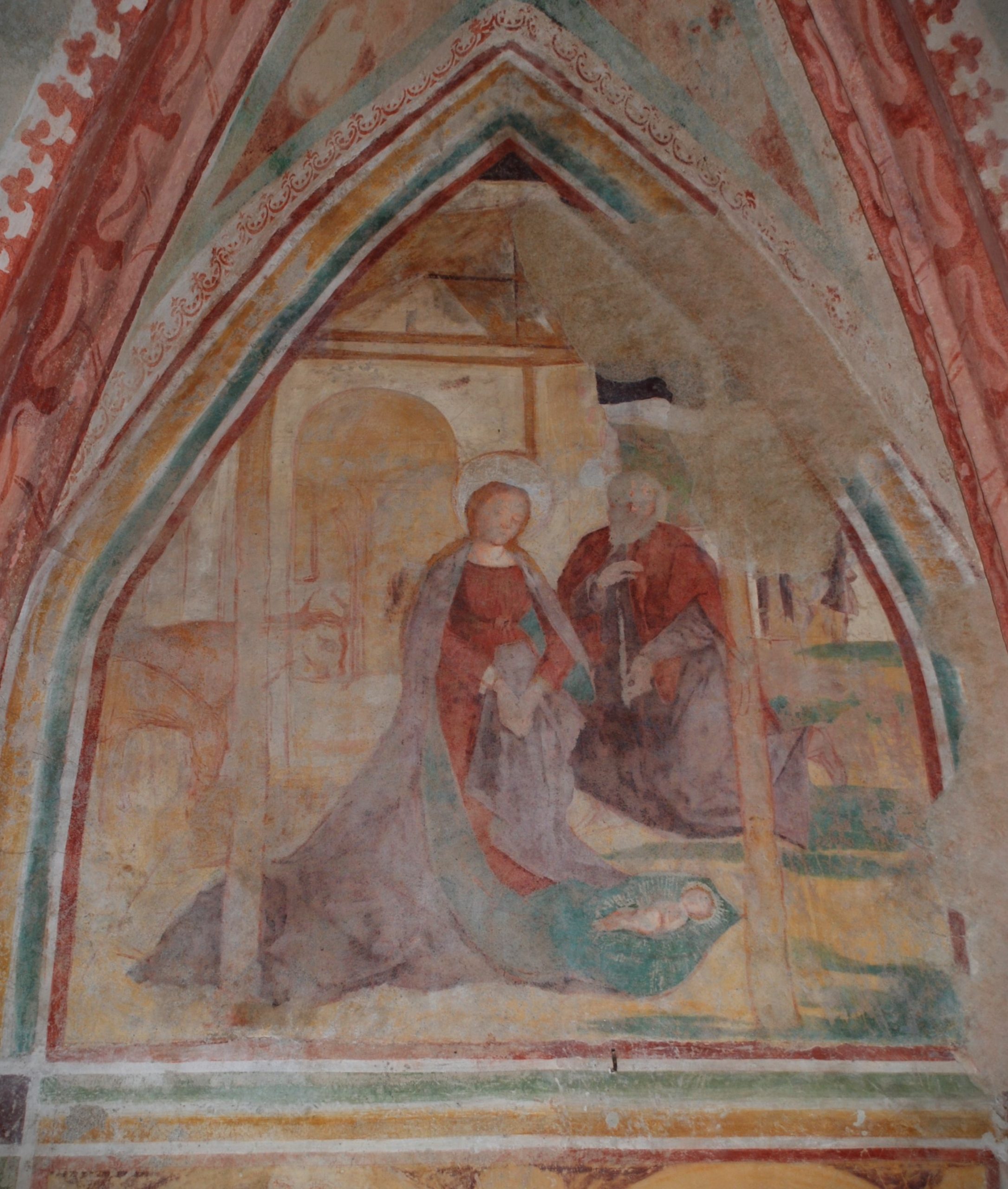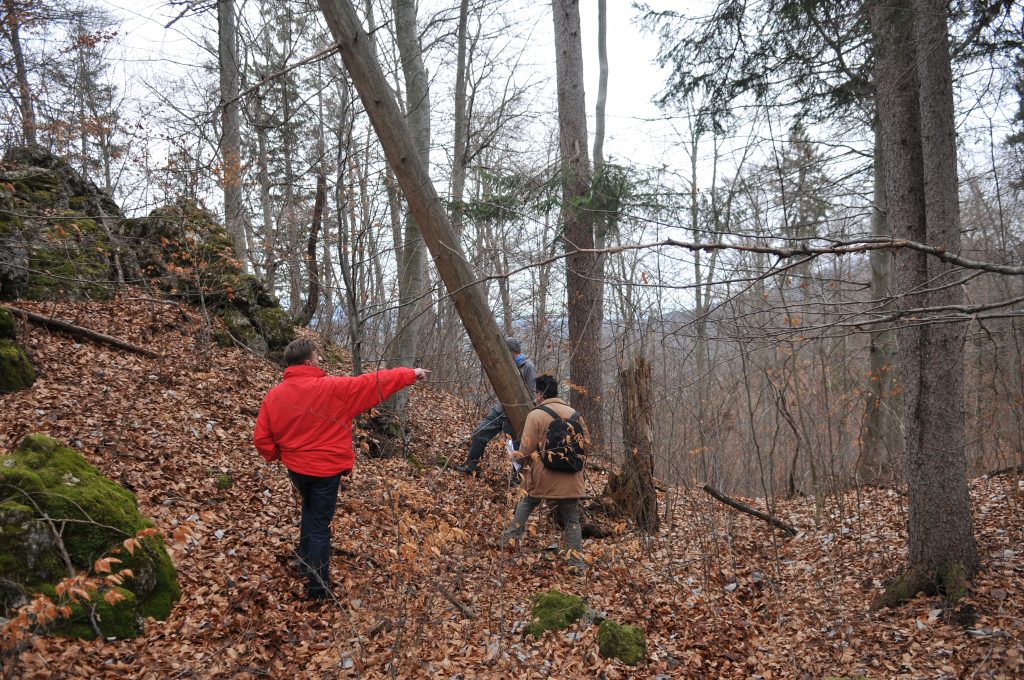The Church of the Sorrowful Mother of God in Dolenjja vas near Senožeče is an important monument of art, especially for the paintings in the presbytery and on the triumphal wall of the nave. The paintings are the work of two artists. The first, a Gothic-oriented artist, painted the vault of the presbytery shortly after 1472, while the second, already strongly influenced by the Renaissance, painted the walls of the presbytery and the triumphal wall of the nave in 1500.
Text. Andrej Jazbec, ZVKDS Restoration Centre


The church is an important monument of art, especially for the paintings in the chancel and on the nave wall. The paintings are the work of two artists. The first, a Gothic-oriented artist, painted the vault of the chancel shortly after 1472, while the second, already strongly influenced by the Renaissance, painted the chancel walls and the triumphal wall of the nave in 1500.
The church is also interesting in other ways, as part of an anti-Turkish camp, from which part of the walls and a monumental defensive tower have been preserved, and as church architecture, which was built in several phases, probably from the late Romanesque to the 19th century. The exterior is characterised by a regular construction of rectangular dressed stones and a stone hipped roof. It was the latter that was the source of the church's problems. It was first restored in the 1980s, when the original wooden roof was replaced by a reinforced concrete one. Due to the contractors' ineptitude, the roof continued to leak in the absence of secondary roofing, and water flowed over the concrete base and into the perimeter walls of the church. Due to the high costs and especially the difficulty in providing roofing material (stone slates), the roof was only repaired in 2017-2018. Throughout this time, the roof problems caused the paintwork to deteriorate. This was most evident in the algae that grew on the north wall of the chancel, the deterioration of the plaster in the upper parts of the walls and their vicinity on the arch, and the migration of salts from the concrete roof structure into the walls and thus into the paintings.
Algae
View of the presbytery before and during restoration works in 2024. The first photo shows the north wall overgrown with algae (photo: Minka Osojnik and Andrej Jazbec).


Restoration work funded by the regular activities of the Restoration Centre started in 2018 with the removal of algae on the north wall. It turned out to be growing on a layer of artificial resin, Calatona, which was applied as a hardener to the paint layer in 1972. However, it also turned out that there were other problems with the mural: the painted plaster was coming away from the substrate, the plaster and paint layer were deteriorating due to the lack of a binder, and there was a strong presence of salts, mainly sulphates and nitrates. Restoration work began after the roof over the presbytery was rebuilt in 2018. The removal of the Calaton layer also removed the algae. Grouting of the detached plaster and consolidation of the plaster and paint layer with Calosil E25 nanoapne was carried out. Cleaning with ammonium carbonate coatings also triggered the salting of the walls, which was continued with water-based coatings and rinsing. Where the presence of salts was highest, a new nano-apne hardening was carried out after the leaching - in places where even this was not sufficient, the paint layer was further hardened by applying 10 % of barium hydroxide. On the north wall of the chancel, two coats of the coating were even necessary. The cleaning and hardening also intensified the colours of the painting. On the depiction of Christ on the arch, the oxidised, darkened lead white paint was transformed to its original appearance. A laser was also used to remove the residual whitewash.
Apostle Thomas
Apostle Thomas before and after aesthetic presentation (photo: Andrej Jazbec).


In their current state, the paintings are a pale reflection of their former appearance. Less than half of the wall paintings have been lost, and where they still remain, mostly only a small percentage of the original paint layer remains. All the blue backgrounds applied in the tempera technique are missing, and the bright red colour of the dresses has oxidised to black. Only faint traces of the brilliant colours and the masterly drawing remain. Nevertheless, the restoration has saved what remains from further deterioration.
In these months, the presentation work in the presbytery is coming to an end: the plastering of the gaps in the plaster and the "abbassamento del tono" retouching, in which the areas with missing layers of paint are not imitated in colour, but only tonally matched to the painting. This leaves the damage visible, but less conspicuous and distracting. The mortar tones used to putty the damage in the plaster shall be adapted to the original plaster. The work in the chancel is nearing completion and work has started on the nave's triumphal wall.







